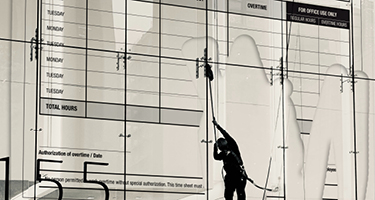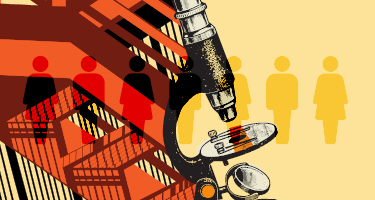The pandemic has changed the business world in countless ways. One of the most immediate is the effect on peoples’ livelihoods—their employment and relationship to the workplace.
The speed of change since The World Health Organization (WHO) declared COVID-19 a pandemic in March 2020 could at times be dizzying. Quarantines took effect, and for many, workplaces were vacated. New federal, state and local laws—including mask and vaccine mandates—contained a profusion of (sometimes conflicting) information and orders, wile also igniting new legal and political controversies.
The constantly changing, and often challenging, work and legal environment kept many executives up at night. And just as new variants continue to appear, more changes, and thus challenges, arise. But, as of the writing of this article, we finally have something of a framework to help guide many employment-related decisions.
Where Things Stand
Since fall 2021, most employers have been subject to numerous COVID-19 orders at the federal, state and local level, and have been expected to navigate orders’ requirements, often amidst legal challenges.
One of the most far-reaching orders was the Emergency Temporary Standard (ETS) issued by The Occupational Health and Safety Administration (OSHA). It generally required employers, among other requirements, to either mandate COVID-19 vaccines or test members of their workforces weekly. In its summary of the ETS, OSHA said the change could prevent more than 6,500 deaths and over 250,000 hospitalizations. After the agency updated the ETS’s deadlines in December, most of the requirements were to be effective in January, with testing requirements for unvaccinated workers starting in February.
Instead, January brought the U.S. Supreme Court decision to stay the ETS. In response to the Court’s decision, OSHA withdrew the ETS and is working on a permanent rule, which likely will face legal challenges if published.
Even though employers were no longer obligated to abide by the ETS, and executives saw life inching back to a semblance of normality, the onslaught of new variants—including Delta and Omicron—led companies to consider vaccine mandates and enhanced safety protocols in the workplace. Some executives were met with resistance from employees and struggled with navigating accommodation requests in a new and unfamiliar context.
So, can employers still force workers to get vaccinated? We tell our clients the answer is generally yes. The Equal Employment Opportunity Commission’s guidance says employers mandating vaccinations for workers entering the workplace does not run afoul of discrimination laws, provided they offer reasonable accommodations in accordance with Title VII of the Civil Rights Act of 1964 and the American with Disabilities Act (ADA). That said, employers should also be cognizant of state laws when issuing vaccine mandates and reviewing exemption requests, as many states have laws related to vaccinations.
However, whether something is strictly legal is not the end of the story. Most employers understand that company mandates carry risks. It’s one thing for something to be legal and another for a company to have to go through the actual practical difficulties of implementing controversial policies. This could involve grappling between terminating employees and mandating vaccinations. For example, if 20 to 30% of a company’s workforce refuses vaccinations, an employer with a vaccine mandate might face having to terminate a large number of workers.
The vaccine question was also complex for the federal government itself. President Biden issued Executive Orders requiring millions of federal employees and federal contractors to be fully vaccinated; both faced legal challenges. In April, the U.S. Fifth Circuit Court of Appeals lifted an injunction that blocked enforcement of the mandate for federal employees. The Order covering federal contractors still remains in the courts.
Further, the Centers for Medicare & Medicaid Services (CMS) requires that health care workers at facilities participating in Medicare and Medicaid be fully vaccinated. The U.S. Supreme Court upheld the requirement in January. The White House said that means more than 17 million workers at approximately 76,000 health care facilities, including hospitals and long-term care facilities, must receive vaccines, absent an approved accommodation.
Open or Closed?
Another ongoing question is when, and whether, offices should reopen. Many employees came to appreciate the flexibility of working from home. Time previously spent commuting could be spent with family or working. Having a home office can mean fewer unexpected interruptions from coworkers. Lunch at the kitchen counter is cozier and less expensive than eating at restaurants or the company cafeteria.
The popularity of the “WFH” culture is one factor in what is now known as “The Great Resignation”—people leaving jobs that no longer suit them and opting for remote work or career changes. Some employees are simply unwilling to forgo the newfound flexibility to which they have become accustomed. Recognizing this, some employers now advertise jobs as being completely remote in the hopes of attracting more applicants.
Other companies have adopted a hybrid structure—that is, one where employees have the flexibility to work at the office or from home. Providing employees a choice of where to work not only attracts those who prefer to work from home, but also supplies employees with a sense of agency in the workplace.
Some businesses are firmly in favor of getting people back into a brick-and-mortar workplace. Reasons can include a desire to supervise more directly, concerns over data privacy and security, giving workers access to needed equipment and to stop erosion of company culture. If employers want people back onsite, we tell our clients it appears they have the legal right to demand it. That is, assuming the employee is not entitled to a reasonable accommodation or exemption and doing so does not violate any other federal, state or local laws. Of course, for the reasons described above, such a choice may impact employee retention and recruitment.
The Last Word
Where do we go from here?
One lingering question is to what extent employees are entitled to take time off for themselves or to care for family members with COVID-19 or “long COVID.” Early in the pandemic, the Families First Coronavirus Response Act (FFCRA) provided a relatively straightforward answer to this question by allowing qualifying employees to take paid time off for certain COVID-19 related circumstances. While that portion of the law expired at the end of 2020, some states enacted or supplemented leave laws related to COVID-19. In addition, federal law allows some employees to take unpaid time off in these situations under either the Family Medical Leave Act (FMLA) or Americans with Disabilities Act (ADA), depending on the specific factual situation. Employers should be familiar with the federal and state laws to ensure employees are provided the leave or protections to which they are entitled.
Some suggest that the next area for challenges could be not just vaccinations, but boosters. For example, should employers require boosters? Should the policy require employees to be “Fully Vaccinated” or “Up to Date” (as defined by the CDC) to enter the workplace? Further discussion, and perhaps litigation, is certainly possible.
Scientists say it is doubtful that COVID-19 will ever completely disappear. Accordingly, the most successful companies will come out of this realizing that the world has changed and there is no way to go back to the way things were pre-pandemic. From issues like remote and hybrid working, to increased mobility of workers and greater awareness of the impact of health and wellness in the office, much of what changed from the pandemic is likely to continue making an impact going forward.
Meredith W. Caiafa is a partner in the Employment Group of Morris, Manning & Martin, LLP in Atlanta and chairs the firm’s COVID-19 Task Force. Caiafa collaborates closely with corporate clients throughout the U.S. and provides counseling and representation regarding employment, executive compensation and restrictive covenants matters. She has extensive experience in complex litigation including arbitration, mediation and trial work in state and federal courts. She also specializes in appellate practice, particularly in federal courts of appeals, the Georgia Court of Appeals and Georgia Supreme Court.
Sarah Greene is an associate in Morris, Manning & Martin’s Employment Group. She counsels and represents employers with respect to various matters including hiring and separation concerns, restrictive covenants, internal investigations, policy and procedure reviews and compliance with federal, state and local employment laws. Greene also negotiates and drafts employment-related contracts including employment agreements, restrictive covenants agreements and separation agreements.
































